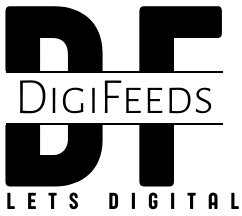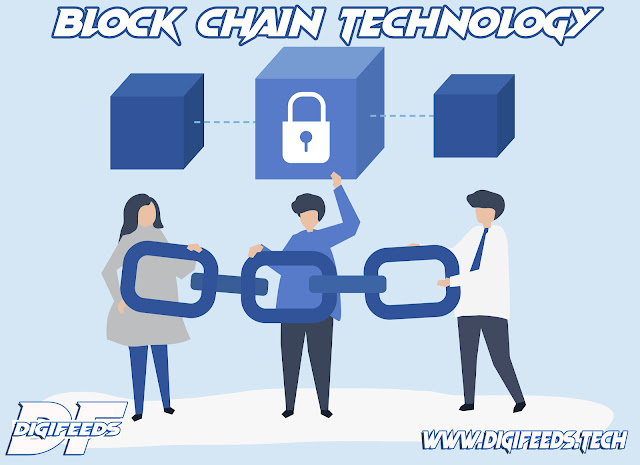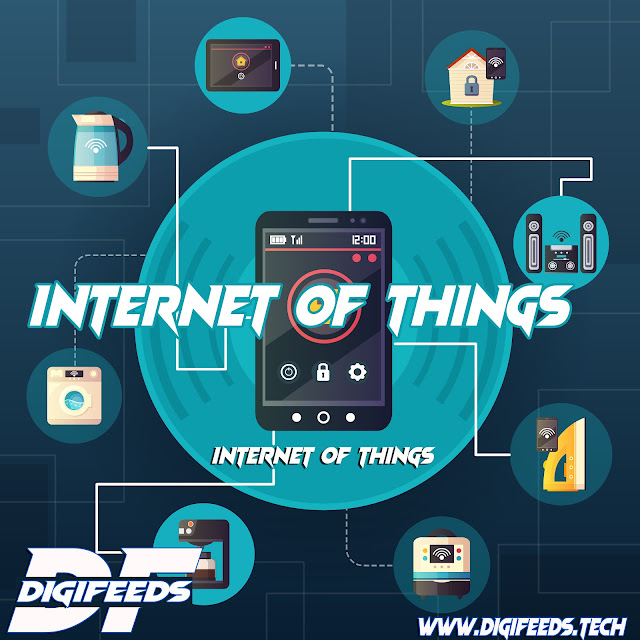 |
| Top Upcoming Technologies in 2022 |
Top Upcoming Technologies in 2022
1. Robotics Process Automation (RPA)
Robotic Process Automation (RPA) with digifeeds is software technology that’s easy for anyone to use to automate digital tasks. With RPA, software users create software robots, or “bots”, that can learn, mimic, and then execute rules-based business processes. RPA automation enables users to create bots by observing human digital actions. Show your bots what to do, then let them do the work. Robotic Process Automation software bots can interact with any application or system the same way people do—except that RPA bots can operate around the clock, nonstop, much faster and with 100% reliability and precision.
2. Edge Computing
Edge computing with digifeeds is a distributed computing paradigm that brings computation and data storage closer to the sources of data. This is expected to improve response times and save bandwidth. It is an architecture rather than a specific technology. It is a topology- and location-sensitive form of distributed computing.
The origins of edge computing lie in content distributed networks that were created in the late 1990s to serve web and video content from edge servers that were deployed close to users. In the early 2000s, these networks evolved to host applications and application components at the edge servers, resulting in the first commercial edge computing services that hosted applications such as dealer locators, shopping carts, real-time data aggregators, and ad insertion engines.
Internet of things (IoT) is an example of edge computing. A common misconception is that edge and IoT are synonymous.
3. Quantum Computing
Quantum computing with digifeeds is an area of computing focused on developing computer technology based on the principles of quantum theory (which explains the behavior of energy and material on the atomic and subatomic levels). Computers used today can only encode information in bits that take the value of 1 or 0—restricting their ability.
Quantum computing, on the other hand, uses quantum bits or qubits. It harnesses the unique ability of subatomic particles that allows them to exist in more than one state (i.e., a 1 and a 0 at the same time).
4. Virtual Reality and Augmented Reality
Virtual reality (VR) with digifeeds :- is a simulated experience that can be similar to or completely different from the00 real world. Applications of virtual reality include entertainment (particularly video games), education (such as medical or military training) and business (such as virtual meetings). Other distinct types of VR-style technology include augmented reality and mixed reality, sometimes referred to as extended reality or XR.
 |
| VR & AR |
Augmented reality (AR) with digifeeds :- is an interactive experience of a real-world environment where the objects that reside in the real world are enhanced by computer-generated perceptual information, sometimes across multiple sensory modalities, including visual, auditory, haptic, somatosensory and olfactory.AR can be defined as a system that incorporates three basic features: a combination of real and virtual worlds, real-time interaction, and accurate 3D registration of virtual and real objects. The overlaid sensory information can be constructive (i.e. additive to the natural environment), or destructive (i.e. masking of the natural environment).
5. Blockchain Technology
A Blockchain with digifeeds is a method of storing a list of entries, which cannot be changed easily after they are created. This also applies to the list. This is done by using several concepts from cryptography, including digital signatures and hash functions. In very basic terms, a blockchain combines the following two ideas:
- Given some data, it is easy to calculate a checksum over the data. Special hash functions can be designed to calculate this checksum. These functions can be designed to return a value that always has the same length, which is not dependent on the length of the input. This value is called hash value, or message digest. The functions also have another property: Given the same input, they must return the same output (hash value/message digest).
- In addition to the hash values, a block typically also contains a timestamp, and some payload. Each block uses a digital signature, which allows detecting any change in the data since the signature was made. When new blocks of data are created, the newly created block will also contain the hash value of the previous block.
In most cases, a blockchain is managed by a peer-to-peer network. All peers use a common protocol that specifies how they should communicate with each other, how a new block is created and validated. Once recorded, the data in any given block cannot be changed easily any more. Changing the block means all the blocks after it need to be changed as well. Depending on the protocol, this will require a majority of the peers, or even all the peers, to agree.
6. Internet of Things (IOT)
The Internet of things (IoT) with digifeeds describes physical objects (or groups of such objects) with sensors, processing ability, software, and other technologies that connect and exchange data with other devices and systems over the Internet or other communications networks. Internet of things has been considered a misnomer because devices do not need to be connected to the public internet, they only need to be connected to a network and be individually addressable.
The field has evolved due to the convergence of multiple technologies, including ubiquitous computing, commodity sensors, increasingly powerful embedded systems, and machine learning. Traditional fields of embedded systems, wireless sensor networks, control systems, automation (including home and building automation), independently and collectively enable the Internet of things. In the consumer market, IoT technology is most synonymous with products pertaining to the concept of the "smart home", including devices and appliances (such as lighting fixtures, thermostats, home security systems, cameras, and other home appliances) that support one or more common ecosystems, and can be controlled via devices associated with that ecosystem, such as smartphones and smart speakers. IoT is also used in healthcare systems.
7. 5G
5g with with digifeeds In telecommunications, 5G is the fifth-generation technology standard for broadband cellular networks, which cellular phone companies began deploying worldwide in 2019, and is the planned successor to the 4G networks which provide connectivity to most current cell phones. 5G networks are predicted to have more than 1.7 billion subscribers worldwide by 2025, according to the GSM Association.
Like its predecessors, 5G networks are cellular networks, in which the service area is divided into small geographical areas called cells. All 5G wireless devices in a cell are connected to the Internet and telephone network by radio waves through a local antenna in the cell. The new networks have higher download speeds, eventually up to 10 gigabits per second (Gbit/s).In addition to 5G being faster than existing networks, 5G has higher bandwidth and can thus connect more different devices, improving the quality of Internet services in crowded areas. Due to the increased bandwidth, it is expected the networks will increasingly be used as general internet service providers (ISPs) for laptops and desktop computers, competing with existing ISPs such as cable internet, and also will make possible new applications in internet-of-things (IoT) and machine-to-machine areas. Cell phones with 4G capability alone are not able to use the 5G networks, as they are not backwards compatible with 4G.
8. Cyber Security
Cybersecurity with digifeeds is the protection to defend internet-connected devices and services from malicious attacks by hackers, spammers, and cybercriminals. The practice is used by companies to protect against phishing schemes, ransomware attacks, identity theft, data breaches, and financial losses.
Look around today's world, and you'll see that daily life is more dependent on technology than ever before. The benefits of this trend range from near-instant access to information on the Internet to the modern conveniences provided by smart home automation technology and concepts like the Internet of Things.
With so much good coming from technology, it can be hard to believe that potential threats lurk behind every device and platform. Yet, despite society's rosy perception of modern advances, cyber security threats presented by modern tech are a real danger.
Tags
daily news
digifeeds
post for knowledge
Technews
technology blog
Top Upcoming Technologies in 2022








👌👌👌👌👌
ReplyDeleteThis comment has been removed by the author.
ReplyDelete